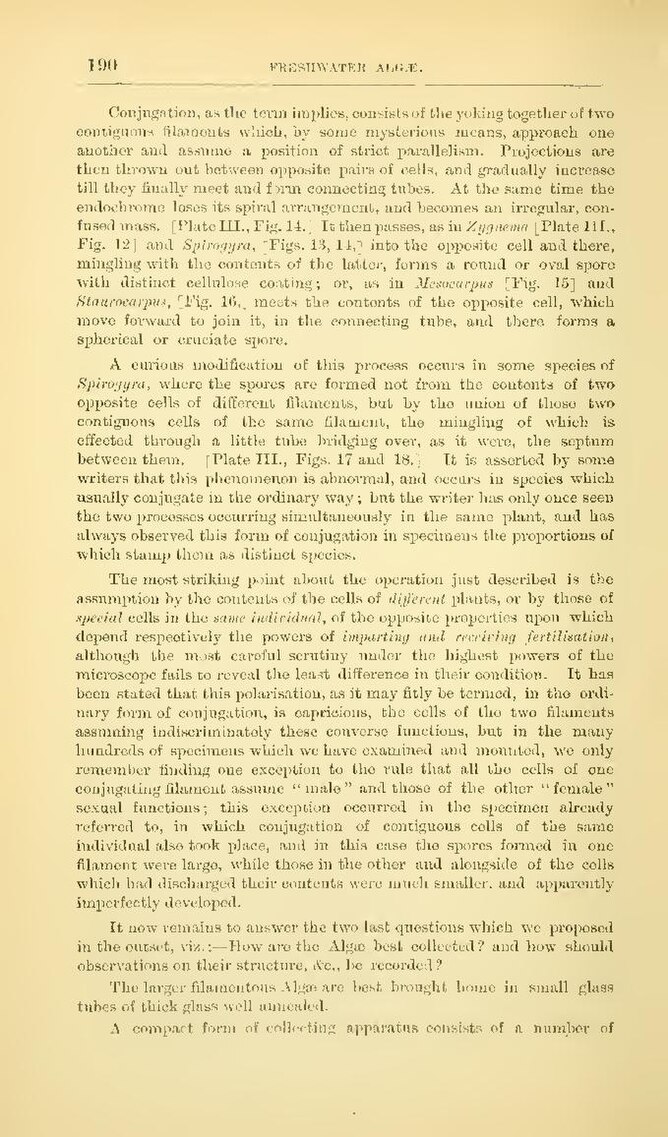Conjugation, as the term implies, consists of the yoking together of two contiguous filaments which, by some mysterious means, approach one another and assume a position of strict parallelism. Projections are then thrown out between opposite pairs of cells, and gradually increase till they finally meet and form connecting tubes. At the same time the endochrome loses its spiral arrangement, and becomes an irregular, confused mass, [Plate III, Fig 14.] It then passes, as in Zygqæma [Plate III, Fig. 12] and Spirogyra, [Figs. 13, 14] into the opposite cell and there, mingling with the contents of the ladler, forms a round or oval spore With distinct cellulose coatings; or, as in Mesocarpus [Fig. 15] and Stauroearpus, [Fig. 16], meets the contents of the opposite cell, which move forward to join it, in the connecting tube, and there forms a spherical or cruciate spore.
A curious modification of this process occurs in some species of Spirogyra, where the spares are formed not from the contents of two opposite cells of different filaments, but by the union of those two contiguous cells of the same filament, the mingling of which is effected through a little tube bridging over, as it were, the septum between them, [Plate III, Figs. 17 and 18,] It is asserted by some writers that this phenomenon is abnormal, and occurs in species which usually conjugate in the ordinary way; but the writer has only once seen the two processes occurring simultaneously in the same plant, and has always observed this form of conjugation in specimens the proportions of which stamp them as distinct species.
The most striking point about the operation just described is the assumption by the contents of the cells of different plants, or by those of special cells in the same individual, of the opposite properties upon which depend respectively the powers of imparting and receiving fertilisation, although the most careful scrutiny under the highest powers of the microscope fails to reveal the least difference in their condition. It has been stated that this polarisation, as it may fitly be termed, in the ordinary form of conjugation, is capricious, the cells of the two filaments assuming indiscriminately these converse functions, but in the many hundreds of specimens which we have examined and mounted, we only remember finding one exception to the rule that all the cells of one conjugating filament assume "male" and those of the other "female" sexual functions; this exception occurred in the specimen already referred to, in which conjugation of contiguous cells of the same individual also took place, and in this ease the spores formed in one filament were large, while those in the other and alongside of the cells which had discharged their contents were much smaller, and apparently imperfectly developed.
It now remains to answer the two last questions which we proposed in the outset, viz.:—How are the Algæ best collected? and how should observations on their structure, &c., be recorded?
The larger filamentous Algæ are best brought home in small glass tubes of thick glass well annealed.
A compact form of collecting apparatus consists of a number of
